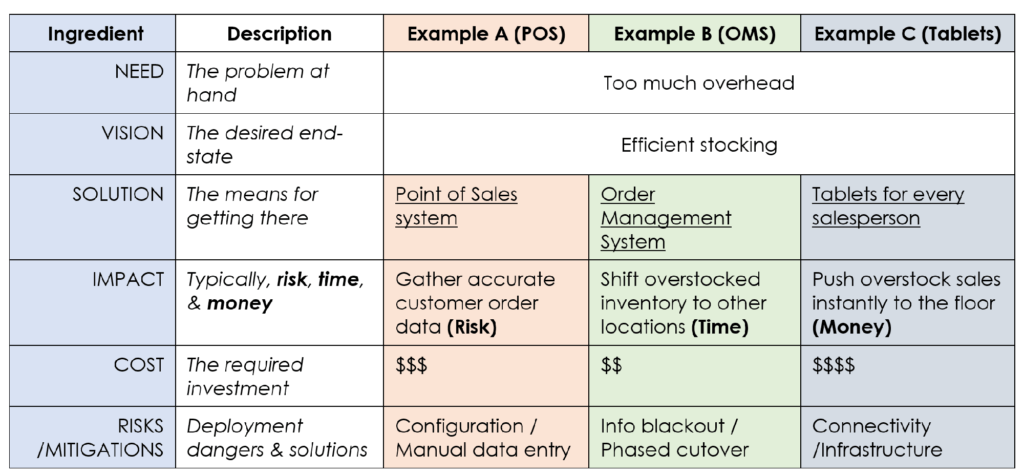
Have you ever seen a dog on “Fun Patrol” at the park? He looks for any other dog having fun, then bounds in and wrestles its toy away, only to get bored and walk off a few minutes later. The dog tests the new toy, realizes the toy doesn’t solve his boredom problem, and drops it. It seems that what brought joy to the hapless victim did nothing for the dog on Fun Patrol.
There’s a technology lesson in there. Just because someone else’s new tool works for them, doesn’t mean it will work for you. Organizations have different needs, and no one approach fits all. Launching a custom sales app just because your competitor has one is risky business. Maybe your competitor has a smaller footprint and needs increased exposure and sales, while your company is well established, but has trouble processing orders quickly. Increasing sales without addressing your existing process issue would only lead to backorders and, most likely, disgruntled customers.
It’s tempting to look around at your competitors, see the tech trends they’re using, and rush to keep up. But no tool helps every company – even very similar companies. And adopting the wrong tech can hurt your business more than it helps.
The takeaway: identify your needs before choosing expensive new technology. Don’t start by falling in love with the tool; look at where your organization is going, what it needs to get there, and what obstacles are in the way. THEN, look for the technology to best supports that vision.
As you shop, be specific about the problem you’re trying to solve. If it’s not about RISK, TIME, or MONEY, maybe you don’t need new technology.
Consider the case of a retail big box company whose problem is overstocking products. They could choose to:
- Implement a new Point of Sales (POS) system to record more accurate sales data patterns, thus reducing the RISK of overstocking low-selling products that might go bad on the shelf.
- Implement an Order Management System (OMS) to identify which stores are over- and under-stocked on a certain product, helping them proactively shift inventory between locations. This would reduce the TIME to clear overhead and bring in new, more saleable products.
- Distribute tablets to managers, allowing them to deliver flash sales on overstocked products directly to the customer on the floor. This would bring in more MONEY through increased sales and reduced overhead.
Each of these is a viable option, as each addresses a need and solves for either Risk, Time, or Money.
Once you have identified your organization’s needs and have a tool in mind, make your case for the solution. We have a recipe for this. Let’s use our big box store from the scenario above as an example.

Breaking down the case like this tests the tech’s ability to address your need. You might find your first choice doesn’t quite align with your need and vision, and that’s ok. Keep looking; you will find a fix – technical or otherwise — that fits. No tech tool is a cure-all, and the solutions are not always as useful and intuitive as the tech company might promise. (See my other blog post for more on this).
When you land on a solution that’s perfect for your needs, there is still work to do. First up: selling your idea. Leadership and other stakeholders will have to buy in and learn how to use the system. Constructing your case, as described above, will help you talk about the solution to your organization.
This kind of thoughtful analysis is well worth the investment of time and energy. Do it right, and you won’t fall for the newest, shiniest toy. You’ll be well on your way to solving your business problem and strengthening your organization.




